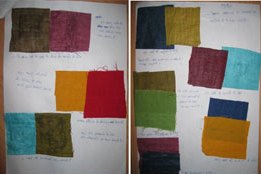
Art history/ Historiography, Crafts, Handlooms, Art, Endangered
An Invisible Craft: Rafoogari of Najibabad
Mehra, Priya Ravish
September, 2007
Kani shawls and Jamewars (yardage for robes), known for their fine pashmina wool, wonderful range of colors and intricate patterns in tapestry technique and twill weave, were once produced in Kashmir during the Mughal period. Considered unique, precious and royal, they received a special place amidst other rare textiles.
The tradition of the Kani shawl journeyed to India from central Asia along with the Mughals and was influenced by local cultural mores, pushing the technique to its creative limit. By the end of the 19th century though this thriving shawl industry had gradually declined. Attempts at revival have been made but the socio-cultural conditions that had made such production possible have changed. Normal production of such exquisite pieces of such high quality is not possible anymore.
The continuing tradition of darning itself becomes extremely significant in this context. The Rafoogars (darners) with their special darning skills have been responsible in keeping these exquisite pieces alive, in circulation and ensured their continued use through an interesting transformation of the product and the market.
 At a Symposium on Indian Textile Traditions at the Textile Museum, Washington DC recently, I came across this sign at the entrance to the exhibition:
At a Symposium on Indian Textile Traditions at the Textile Museum, Washington DC recently, I came across this sign at the entrance to the exhibition:
 At a Symposium on Indian Textile Traditions at the Textile Museum, Washington DC recently, I came across this sign at the entrance to the exhibition:
At a Symposium on Indian Textile Traditions at the Textile Museum, Washington DC recently, I came across this sign at the entrance to the exhibition:
A Garden of Shawls: The Buta and its seeds
Welcome to the...
This is a preview. To access all the essays on the Global InCH Journal a modest subscription cost is being levied to cover costs of hosting, editing, peer reviewing etc. To subscribe, Click Here.



